ALL...ABOARD!: Contoocook Village
Introduction
Text-to-speech Audio
Images
Postcard image of Kingsbury & Davis.
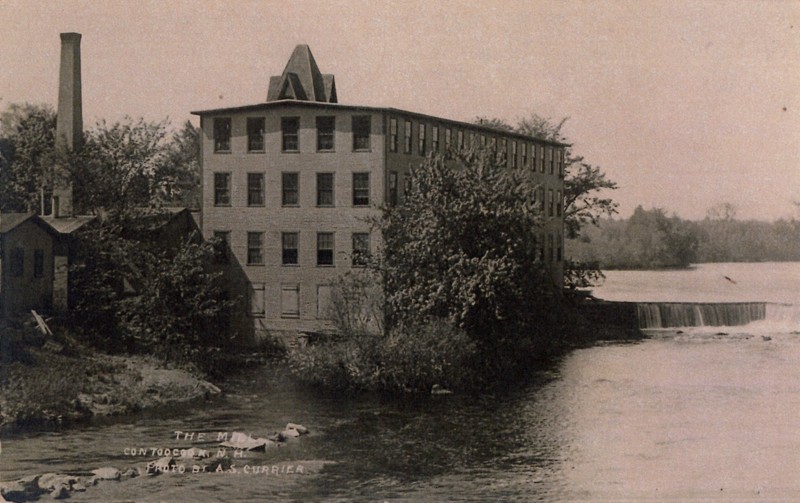
Still image of milk being delivered to the Contoocook Depot from film by Oscar Polhemus, circa 1930.
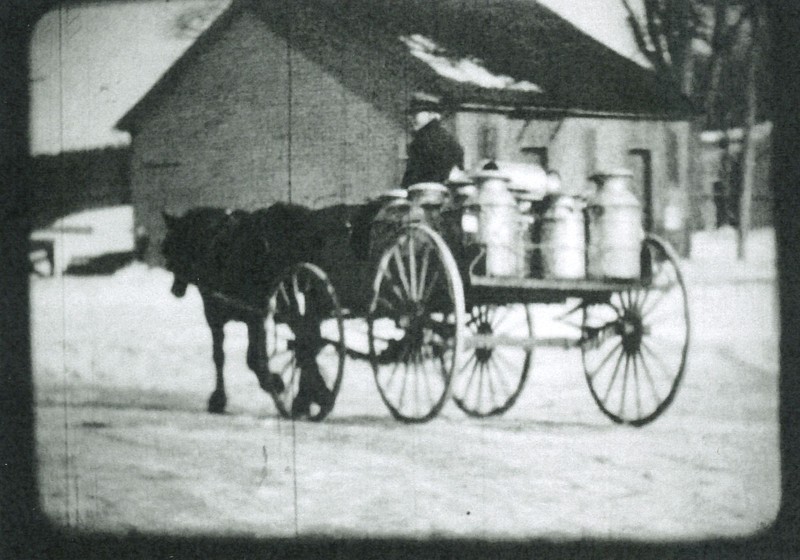
Phil Ball and Irving Hicks rounding the curve of the railroad on a hand car with the Nelson Grain Mill on the right. From film by Oscar Polhemus, circa 1930
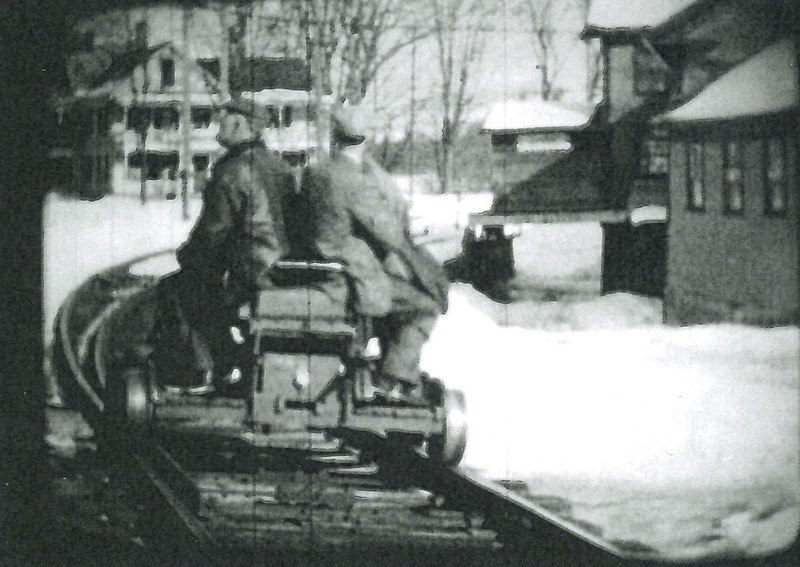
Undated image of a train full of lumber heading into the Contoocook Depot with high waters on both sides of the track.
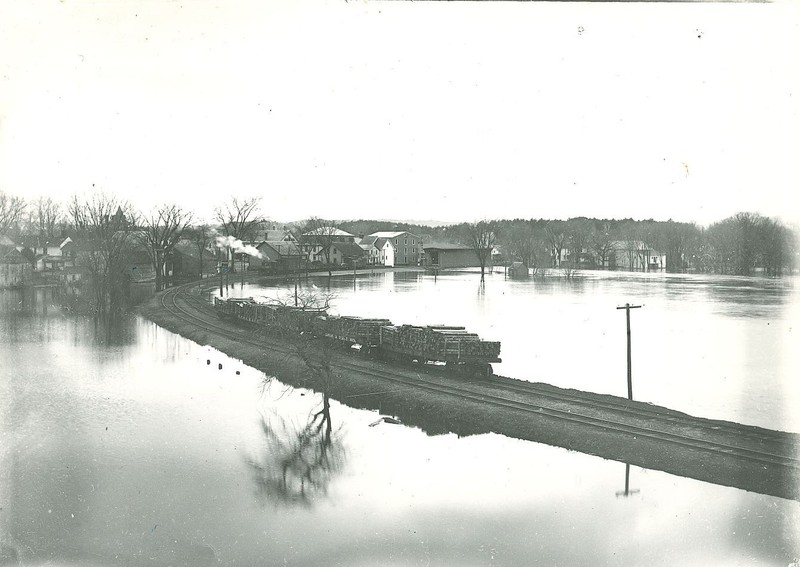
Image of the Contoocook Depot following the flood of 1936.
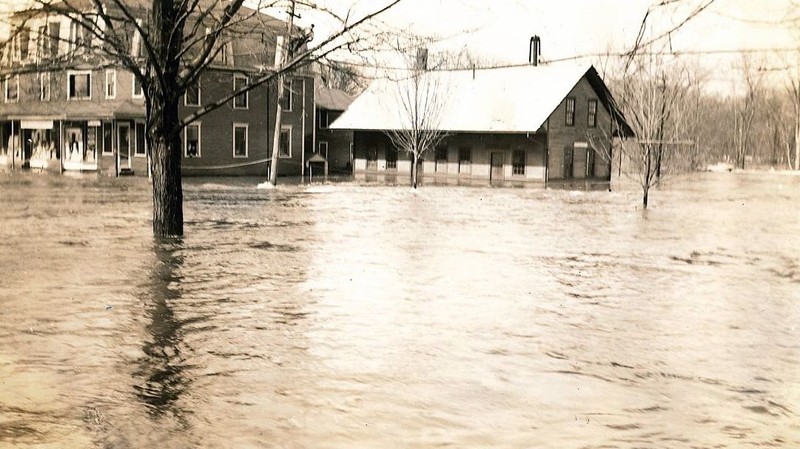
Image of the Contoocook freight house following the flood of 1936.
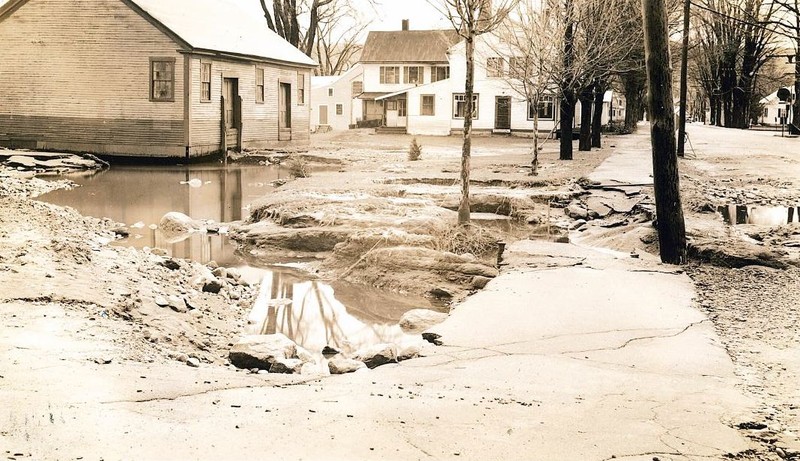
One of the businesses which suffered extensive damage from the flood of 1936 was the Nelson Grain Mill, which was sheared in half.
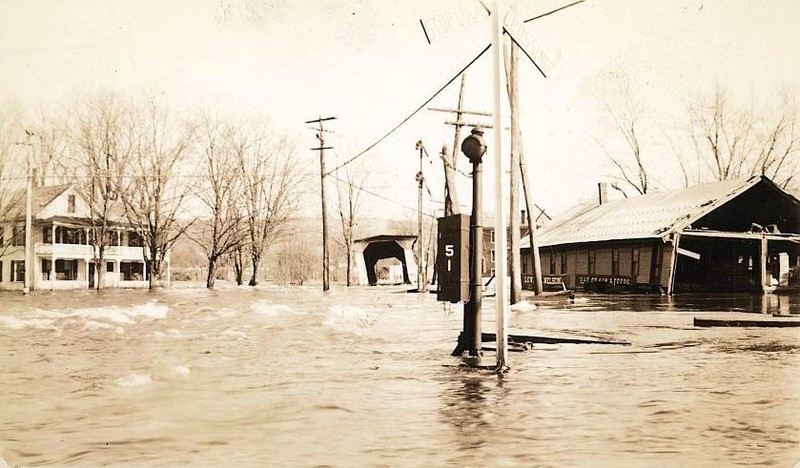
One of the businesses which suffered extensive damage from the flood of 1936 was the Nelson Grain Mill, which was sheared in half. Also visible in the photos is the damage to the railroad tracks.
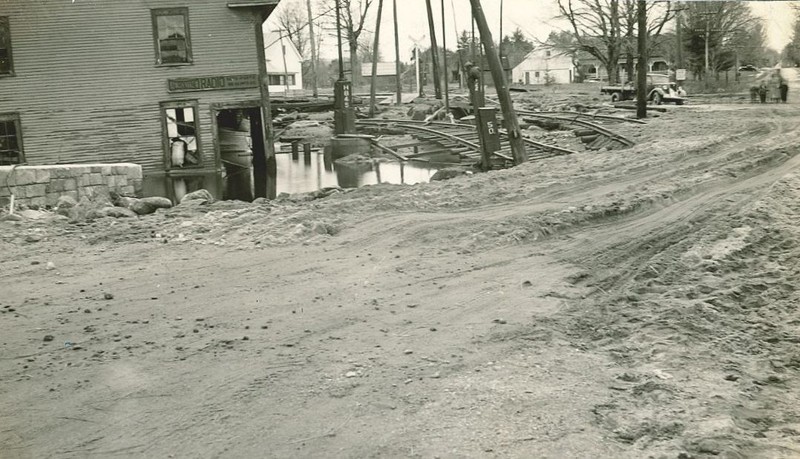
One of the businesses which suffered extensive damage from the flood of 1936 was the Nelson Grain Mill, which was sheared in half. Also visible in the photos is the damage to the railroad tracks.
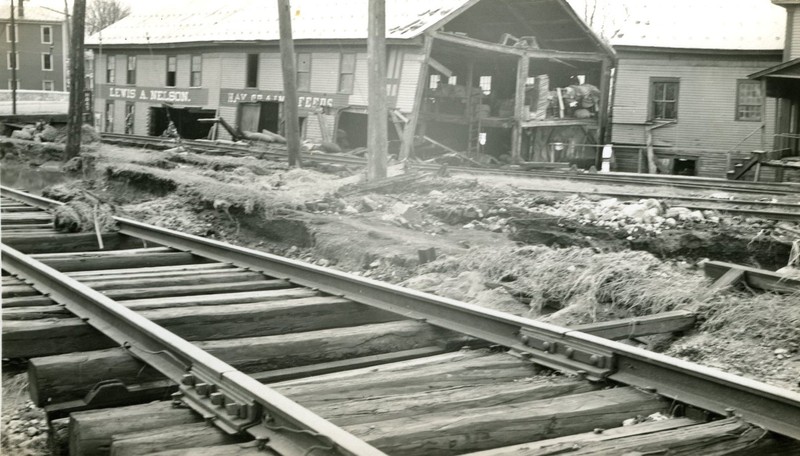
Image of 1849 assessment on Concord and Claremont Railroad investors requesting payment of 30% assessment.
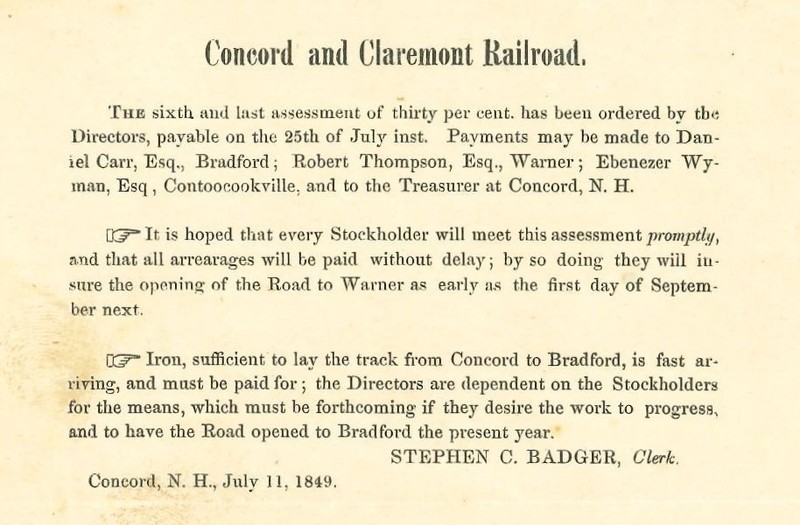
Image of the cover of the By-Laws of the Contoocook Valley Rail Road.
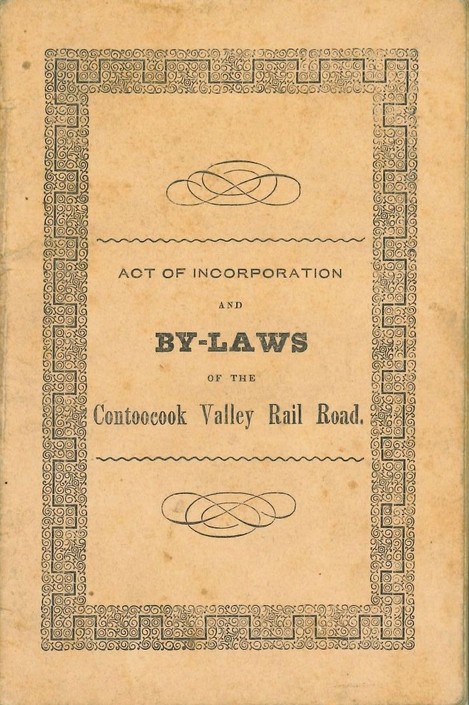
Image of the Contoocook Valley Railroad bond, which offered investors $4 for every $100 bond purchase.
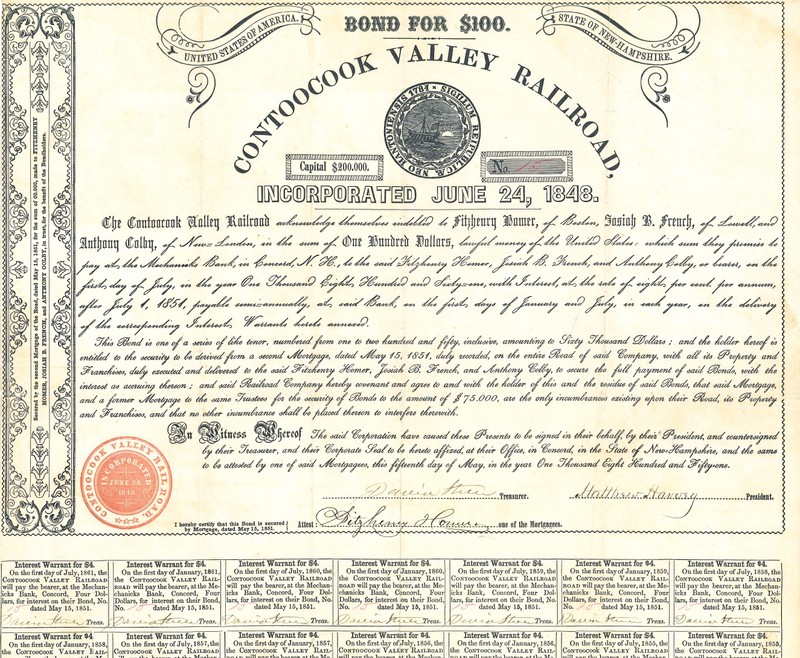
Portrait of Hamilton Eliot Perkins as a young man.

Photograph of Perkins Manor.
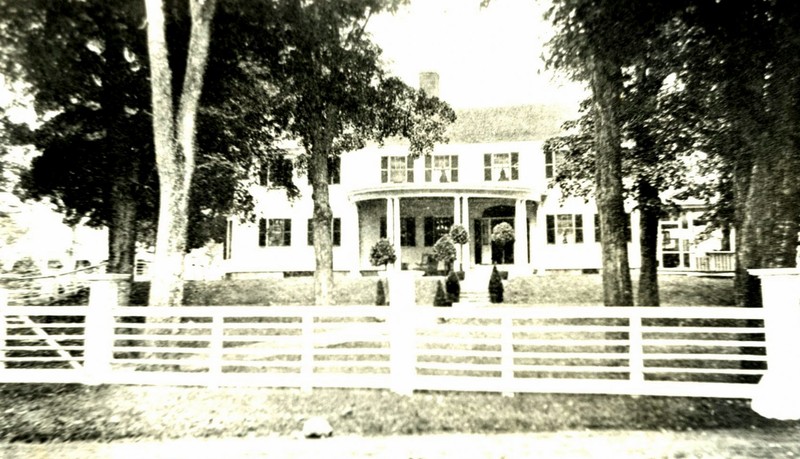
Photograph of railroad tracks and crossing. In the background is Perkins Manor (partially obscured by trees).
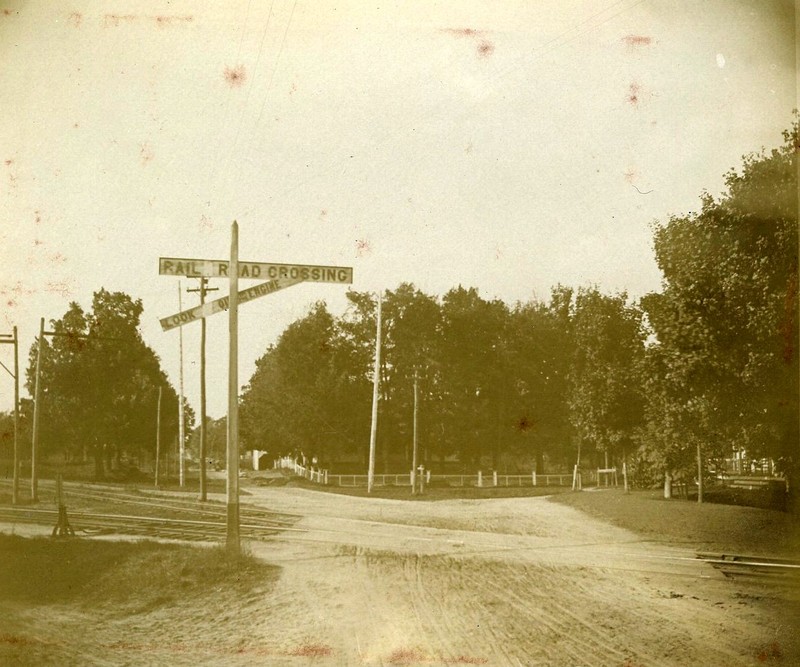
Backstory and Context
Text-to-speech Audio
Businesses and the Railroad
By 1858, less than 10 years following the arrival of the railroad, there were a number of manufacturers and shops in Contoocook, including carpenter shops, cooper shop, woolen mill, mackerel kit manufactory, sawmill, grist mill, shingle mill, carriage shop, and others. Below are three businesses that were in operation in the early 20th century.
- Kingsbury & Davis: In the 1890s, Kingsbury & Davis built a three-story wooden building on Cedar Street in Contoocook to build machines which folded all kinds of paperboard boxes. The company employed more than 100 people and the machines they manufactured were shipped by freight all over the country. The building, which was torn down in the 1960s, was located where the Cedar Street municipal parking lot is located today.
- Contoocook Dairy: With the introduction of the railroad to town, farms could have their dairy products shipped by freight train. In 1890, Deerfoot Farm ran a creamery which was located on Cedar Street in Contoocook Village with easy access to the freight depot, thus opening access to new markets. The creamery changed hands several times over the next several decades. But by the 1930s, with changes in the dairy industry, both regulatory and technological, milk was being collected by truck, instead of transported by train – one of many signs of the waning importance of the railroad in town.
- Nelson Grain Mill: The Lewis A. Nelson Grain Mill sat on the slip of land between the Contoocook River and the point where the railroad lines split off to either Warner or West Hopkinton. The proximity to these two features, the river and the railroad, was not coincidental. Water power and the ability to move product by rail helped ensure business success. A mill operated at this location from the early 1900s to 1937, when a fire destroyed it. Today it is the site of the Hopkinton Fire Department.
Disasters
Although flooding in Contoocook Village was not uncommon, the two successive storms of 1936 and 1938 caused so much damage to businesses and homes that state and federal authorities began to look for solutions to control the Contoocook River from breaching its banks. Locally, areas along the Contoocook River were the hardest hit during the flood of 1936. The rushing water and ice pushed the covered railroad bridge off of its abutments, countless homes and businesses were damaged, and Fountain Square was under two feet of water. The flood of 1936 and the hurricane of 1938 led to the building of the Hopkinton-Everett Dam. Several homes and nearly 4,000 acres of land in Hopkinton were taken for the dam and the accompanying flood control areas.
RAILROAD OWNERS
The 1840s saw an explosion of railroads in New Hampshire as multiple lines competed to be the first to connect new markets. Many Hopkinton residents were opposed. In 1844, several years before there was any prospect of a railroad going through the town, Hopkinton’s elected representatives to the General Court were opposed to the railroad and its use of eminent domain (the right of the government to take private property, or allow it to be taken, for public uses). Less than five years later, opinions in Hopkinton had changed. Townspeople were caught up in “railroad fever” and had invested heavily in railroad companies. Yet when assessments were placed upon the original stock for the completion of the enterprise, many investors merely wanted to be rid of their obligations. In his book, Life & Times in Hopkinton, N.H., C.C. Lord states, “…many people made heavy sacrifices. The aggregate loss to Hopkinton residents was very large. Many thousands of dollars were the cost of a blind zeal…” In addition, local people who supplied furnishings for the road and labor suffered losses when they were paid in stock, which later became worthless. For some investors, such as Hamilton Eliot Perkins, the railroad may have seemed like a perfect solution to a business problem. As a mill owner and a shipper, trains would provide a way of getting products of his trade to markets.
Among the Society’s rarely examined documents is the incorporation document for the Contoocook Valley Railroad. A small booklet, it starts with an enactment by the New Hampshire Senate and House, that Hamilton Perkins and 17 other men are made the “body corporate by the name of the Contoocook Valley Railroad.” It authorizes them to “locate, build, and maintain a railroad not exceeding six rods in width, with necessary additions for cuttings ….”
Hamilton Eliot Perkins (1806-1880) lived at what we call Perkins Manor, in that part of Contoocook Village center that forms the V between Park Ave. and Kearsarge Ave. (Hamilton’s father, Roger Eliot Perkins, came to Contoocook from Salem, Mass.; he built Perkins Manor around 1825.) Hamilton also resided in Boston, where he owned several ships and was engaged in the Africa trade. In Contoocook, Hamilton owned several mills along the river; he was also postmaster, a well-respected Concord lawyer, and had considerable wealth and real estate. For Perkins, the railroad may have seemed like a perfect solution to a business problem. As a mill owner and a shipper, trains would provide a way of getting products of his trade to markets. The train project was funded by bonds; local citizens purchased $100 bonds expecting a return on their investments. Eminent domain laws – the expropriation of private property for public use – were being tested in the acquisition of land for tracks.
Hamilton Perkins didn’t stay on the Board of Directors for long, but the rail line was built and opened in 1849 (the section from Contoocook Station to Hillsborough Bridge; later leased to the Concord & Claremont Railroad).
Perkins Manor would remain visible to riders, as described in The Bay State Monthly in April 1884, “In passing up the Concord and Claremont Railroad from Concord, the observant traveler has doubtless noticed the substantial and comfortable-looking homestead with large and trim front yard, shaded by thickly planted and generous topped maples, on the right-hand side of the road after crossing the bridge that spans 'Contoocook's bright and brimming river' at the pleasant-looking village of Contoocookville in the northern part of Hopkinton."
Sources
Act of Incorporation and By-laws of the Contoocook Valley Rail Road. Concord, NH. Morrill & Silsby, 1849.
Belknap,U.S.N., Capt. George E.. Captain George Hamilton Perkins, U.S.N.. The Bay State Monthly. April 1st 1884.
Chandler, William Eaton. New Hampshire a Slave State: Senator Chandler's Series of Papers Commonly Known as the Book of Bargains. 1891.
Hopkinton Historical Society. A Walk Through Two Villages Contoocook and Hopkinton. Hopkinton, NH. Hopkinton Historical Society, 2009.
Lord, C.C. . Life and Times in Hopkinton, N.H.. Concord, NH. Republican Press Association, 1890.
Mead, Edgar T.. Through Covered Bridges to Concord. Brattleboro, VT. Stephen Greene Press, 1970.
New Hampshire Antiquarian Society. Life and Times in Hopkinton 1735-1970. Hopkinton, NH. New Hampshire Antiquarian Society, 1989.
New Hampshire Antiquarian Society. Hopkinton New Hampshire 1765-1965. Hopkinton, NH. New Hampshire Antiquarian Society, 1965.
Tyler, Mala Duclos. Hopkinton and Contoocook. Charleston, SC. Arcadia Publishing, 2012.
HHS collection
HHS collection
HHS collection
HHS collection
HHS collection
HHS collection
HHS collection
HHS collection
HHS collection
HHS collection
HHS collection
HHS collection
HHS collection
HHS collection
